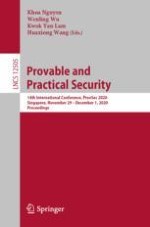2020 | OriginalPaper | Buchkapitel
Secure Transfer Learning for Machine Fault Diagnosis Under Different Operating Conditions
verfasst von : Chao Jin, Mohamed Ragab, Khin Mi Mi Aung
Erschienen in: Provable and Practical Security
Aktivieren Sie unsere intelligente Suche, um passende Fachinhalte oder Patente zu finden.
Wählen Sie Textabschnitte aus um mit Künstlicher Intelligenz passenden Patente zu finden. powered by
Markieren Sie Textabschnitte, um KI-gestützt weitere passende Inhalte zu finden. powered by
